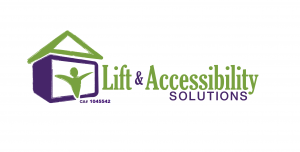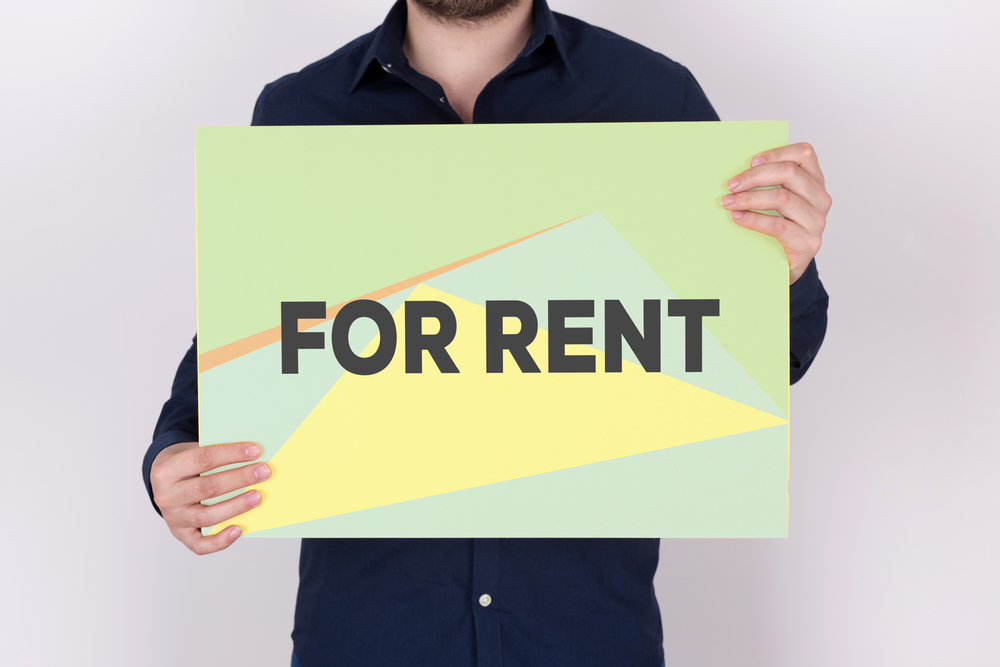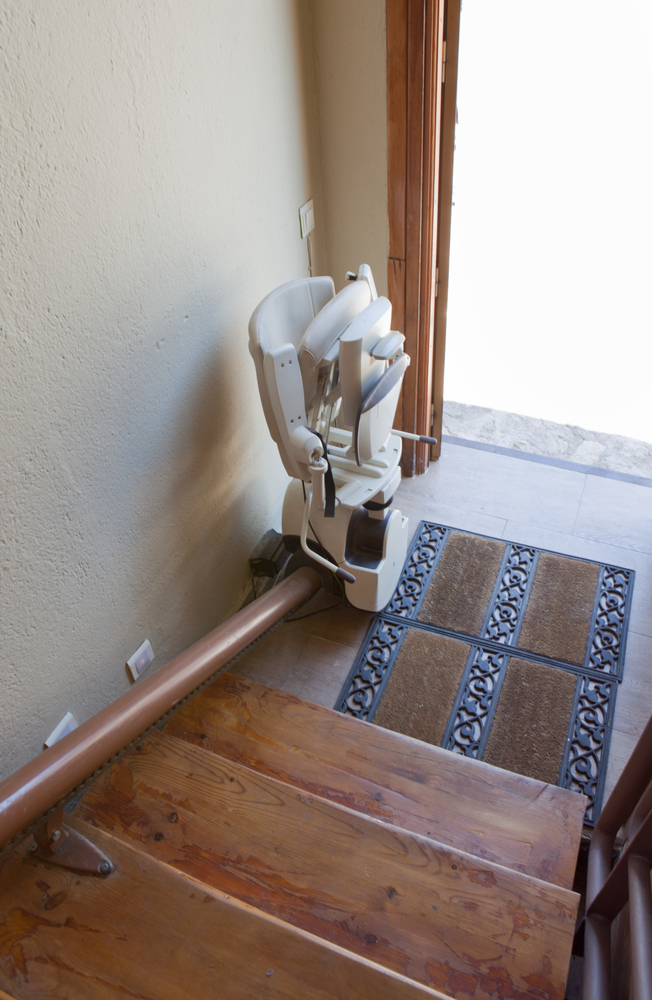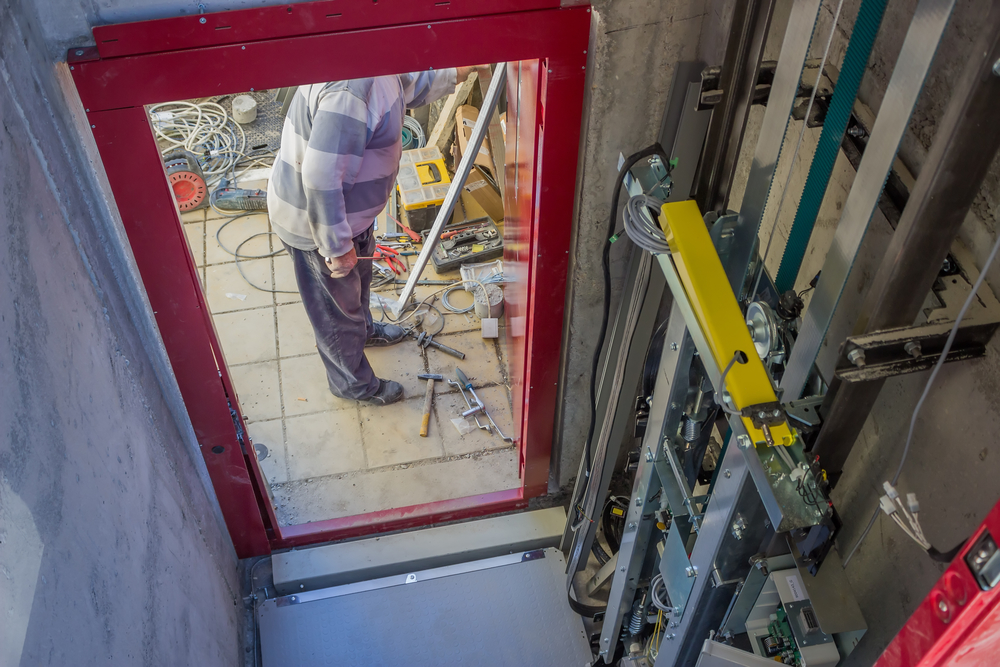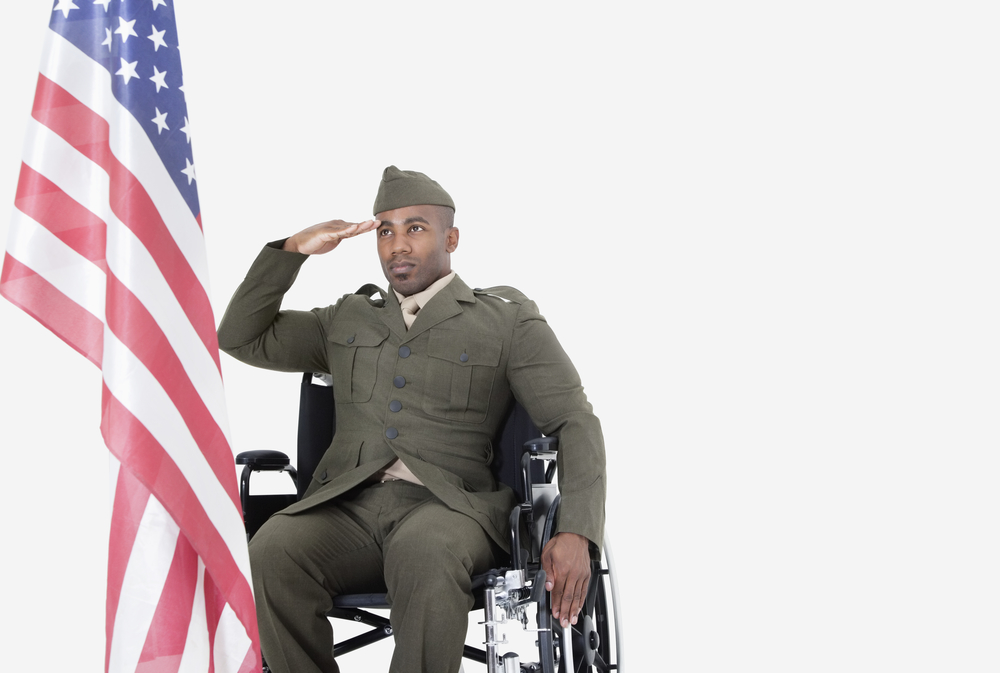14 Apr / 2017
The Skinny On Used And Rented Stairlifts
For people facing mobility issues at home, one of the best solutions available is to install a stairlift. However, depending on your situation, a permanent stairlift installation might be a difficult thing to consider. While it’s not as expensive as, say, an elevator, it still comes with a price tag that’s difficult for some people to handle. For other people, a short-term, not permanent, disability means you don’t want to spend all of that money for something that you might not need in a year or two. If you find yourself in a situation like one of these, the good news is there still might be hope. This is because, in addition to buying and installing a new stairlift, you can also find and buy used ones, or even consider renting them. While each one of these options comes with its own things to consider, the bottom line is that they can give you the mobility you need while not sacrificing your wallet.
Used Lifts
If you are facing the prospect of long-term disability, but can’t handle the price tag of a new lift, it is possible to find used lifts available. Depending on location, there are companies that actually deal with used stairlifts, or you can also go the tried-and-true method of an internet search. While you can probably get a much better deal buying from an individual, companies that deal in used lifts are going to be able to offer more in the way of options and guarantees. If you do decide to buy from an individual, however, make sure to have the lift thoroughly inspected by a professional before you buy. The last thing you need to do is spend money on a system that’s going to break down, or worse, put you back in need of medical care.
Rental Lifts
A much more convenient option for many people is to rent. This is a great choice if you are facing the prospect of temporary, rather than permanent, problems. By renting a lift, you are paying for the lift only when you need it, and not paying for it for the rest of your life.
If either one of these options sounds intriguing to you, you probably have some questions. If so, we’d love to hear from you. Feel free to send us an email or give us a call. We’d like to be able to help you figure out what’s best for you and your situation in the immediate and long-term future!
08 Apr / 2017
When to Call a Professional to Repair Your Lift
If your home’s stairway chair lift or in-home elevator suddenly stops working, it would be natural to assume that something has gone wrong. Your first inclination may be to call a company professional to repair it, and really, you can’t go wrong with that option. Regardless of what the problem ends up being, an expert will be able to quickly identify the source of the malfunction, and troubleshoot it with little difficulty.
There are some circumstances where you may be able to investigate and address the problem yourself, depending on your technical skill level and the complexity of the issue. A word to the wise on this point: take care not to void your lift’s warranty! Review the warranty documentation that came with your lift carefully before attempting repairs of any sort by yourself. If you come to a point where any further attempts at troubleshooting would potentially render your warranty void, stop immediately and call a professional.
If the problem is simple, on the other hand, you may be able to resolve it quickly without any need for a service call. Some common problems that are easy to identify are whether the battery is charged or whether the safety switch is turned off. If the battery is the issue, you’ll be able to know it because there should be an indicator light somewhere showing whether the battery is charged or charging. If that light is turned off completely, the battery is not charged at all, nor is it recharging. This is a point where you should call for repairs under warranty. If the safety switch or key is turned off, it would automatically prevent the lift from operating, as it’s designed to do. Check the switch and make sure it’s turned on, then attempt to operate the lift again.
If the lift still isn’t working, then there may be a problem with one or more of the lift’s safety edges designed to prevent the lift from running into damaging obstacles. Make sure that, in fact, no obstacles are blocking the lift, then see if any of those safety edges are stuck or otherwise unmovable. If they are, it may then be the location of the problem. If all of these common features of your stairlift appear to be in working order, but the lift still isn’t moving, then it’s very likely that it will need the attention of a repair professional from the original installation company.
25 Mar / 2017
Accessibility Makes a House a Home
Architects have long debated how important a building’s design is. Some have come to the conclusion that the appearance of a building is just as important as its purpose, or perhaps even more so. Others hold the opinion that form must follow function- a drafty and leaky building will fail to adequately protect its occupants, regardless of its visual beauty. A related principle stands out either way: if the intended occupants of the building can’t access it easily, then the building has clearly outlived its usefulness. This is as true for individual houses as for grand civic structures.
All buildings are a means to an end- that of shelter from the elements- but there’s something special about a home. Most of us spend the majority of our time in our homes, and frankly, we’d rather be there than in the office, because home is where the heart is. It’s where family is, and where many of our best memories are made. It’s a place that we want to associate with rest and enjoyment.
Of course, we don’t remain the same during our entire lives. People grow and change, and adapt to new circumstances. Often our homes start to represent something different in the context of those changes. Buildings don’t simply adjust themselves in the way their occupants need. Many buildings that were once of great use to thousands of people are for this reason abandoned to the elements, but who wants such a fate for their beloved home? Anyone who has invested so much time and effort in the beautification of their home would hardly feel satisfied with such an end, even if the staircase has lately become more of a burden than a help.
Fortunately, human ingenuity has now made it easier than ever before to adapt a home to the changing requirements of life. Technologies like motorized chair lifts can bypass the steps of any staircase, regardless of shape. That key feature of a multistory home no longer need imply the wearing down of its user’s knees, or demanding the assistance of another resident. A more attractive but more design-intensive technology like a home elevator can accomplish the same useful purpose of improved accessibility, while adding a customized touch of architectural sophistication. Above all, they provide a home’s occupants with that cherished feeling of independence. Having outdoor steps turned into a ramp, installing swing away doors, widening doorways, lowering thresholds, and installing grab bars are also important and simple ways to adapt the home.
Our houses are, as one architect put it, “machines for living.” They should serve us, rather than wear us out. Even so, we feel attached to them, and we want them to be places where we can be happy and comfortable for many years. A proud and independent homeowner would therefore do well to consider the value of these adaptations that can help a house remain a home.
One of the most difficult things about seeing your loved one grow older is watching his or her mental and physical abilities decline. Old age is inevitable and many people are prepared to care for seniors as they age, but that doesn’t make it any easier when your loved one suddenly can’t remember details the way they did before or can’t participate in the same physical activities they used to love. If you are starting to notice a decline in your loved one’s abilities, the most important thing is to communicate, so that both of you are prepared for what will happen in the future and understand how best to work through it.
Make sure that when you start the conversation, both of you are in a comfortable place, preferably somewhere that they feel at home. Throughout the discussion, make sure to reference how you feel, and ask how they feel. Try framing sentences around your inner feelings and concerns: “I’m worried about you because…” or “I care about you a lot, which is why I’m telling you this…” are phrases that work well. This helps show the other person that you are coming from a place of care and ultimately reinforces the idea that you will work through these problems together, no matter what.
With that said, don’t shy away from the tough parts of the conversation. Talking about subjects such as financial and legal problems may be difficult, but it is important to discuss how you are going to be able to handle your loved one’s ability to drive, deal with bank statements, or fill out medical paperwork. In many cases, the other person is used to independence and does not want to give it up; while this is understandable, you should do your best to repeat that you care about them and want them to be healthy and happy, which is why it is necessary for you to intervene in these matters.
This applies to other issues such as the possibility of hiring a caretaker or installing special equipment in your loved one’s home in order to better accommodate their personal needs. Honesty is key: emphasize the idea that although it is difficult, these changes are necessary, because without them, he or she will not be able to live a safe and comfortable life. Ultimately, show them that you are there in their best interest, and that although they are going through a difficult transition, they will deal with it with your help.
01 Mar / 2017
Making a Move with Adaptive Dancing
If you’ve written off exercise for one reason or another, don’t give up and decide that exercise just isn’t right for you. Instead, you should look at other, innovative options out there. One of the newest and most exciting trends in exercise right now is adaptive dancing. Never heard of it? Simply put, adaptive dancing is defined as dancing that is designed for individuals with different abilities. In other words, it’s dancing for the rest of us. It’s a fun, creative way for everyone to not only enjoy their exercise time, but to get the benefits of a more healthy and active lifestyle. If you have a physical or mental disability, it’s okay: adaptive dancing was created specifically with you in mind. What do I mean? Well, here’s what you should know:
Adaptive Dancing is For Everyone, Regardless of Dancing Ability
Unless you’re one of the few that started dancing at an early age and continued ever since, you probably stopped thinking about being a “real” dancer right around your tenth birthday. That’s okay. Adaptive dancing’s purpose is to get you to move and enjoy it while it’s happening. It doesn’t matter if you can’t dance–you start at your own ability level and work from there. As long as you’re having fun, your talent doesn’t matter!
Adaptive Dancing is For Everyone, Regardless of Age
Since differentiation is a cornerstone of adaptive dancing, then it should be no surprised that it’s open to all ages. Children, seniors, and everyone in between can benefit from healthy motion, and that’s what adaptive dancing is all about.
Adaptive Dancing is For Everyone, Regardless of Physical Ability
In a program with a lot of great things going for it, it’s hard to say “this is the best part,” but, this part might be. Because the program can be adapted in an endless number of ways to meet a dancer’s needs, there’s no reason think that anyone would not be able to participate or benefit from a program like this!
If you are intrigued by adaptive dancing and want to know more, a quick Google search can probably put you in touch with one or more programs in your area.
15 Feb / 2017
Decorating Around Your Stair or Chair Lift
For many people, their home is an expression of themselves. People will put hours and hours of work into decorating their house so that it looks exactly as they want it, because they feel that it reflects their personality for themselves as well as for visitors to see. As a result, when it comes to installing a stair or chair lift, people are often skeptical of the idea because they think they’ll mar the decorating scheme of their home. After all, lifts are rather large contraptions that take up a good amount of space around your staircase, which makes it difficult to deny that they will be noticed by whoever visits – as well as clearly visible to your own eyes. However, having a lift installed and maintaining the decorating scheme of your home are not mutually exclusive. It’s possible to integrate your lift into the design that you’ve established elsewhere. Here are a few tips for decorating around your stair or chair lift.
1. Think about color
The first thing that will stand out to anyone about your stairlift is its color, which can often contrast starkly with that of the walls or the staircase itself. As a result, try to either pick your lift color around what is already in your home, or decorate your home to match the color of the lift. This can be difficult if the lift is bright white, but in cases like this, you can use complementary colors such as a medium shade of blue or a deep burgundy shade of red. That way, your lift stands out for its color, but in a way that looks coordinated rather than clashing.
2. Decorate to distract
In the area where you will have the lift, try a busier design to take attention away from the lift itself. This could mean hanging portraits along the wall next to the staircase, adding potted plants on alternating steps, or otherwise including a number of different elements to distract wandering eyes.
3. Show it off
This may seem counterintuitive, but sometimes the best way to design around your stairlift is to make it part of your decoration – and, in fact, to make it the centerpiece. For example, a stairlift that is shown clearly curving around a staircase through plain wooden stairs and glass side barriers will be more appealing than one that is half-hidden but still pretty obvious.
07 Feb / 2017
Installing a Chairlift in Your Home
Earlier, we discussed pricing, options, and other information about installing an elevator in your home. Today, we’re going to look at an option that appeals to many people because, in part, is a more economical choice: installing a chairlift.
What Is A Chairlift?
A chairlift is pretty much exactly what it sounds like: it is a motorized chair installed on a special rail system. Like an elevator, it is designed to help move its occupant safely, quickly, and conveniently up or down a floor in a building. Unlike an elevator, though, which requires a special area to be built to house the elevator cab as well as other modifications, a chairlift is a relatively easy installation because it is designed to smoothly travel up or down a flight of stairs. This means that the chairlift installation is a much easier process than an elevator, and even better: it tends to be much cheaper as well.
What Are The Types Of Chairlifts?
Generally speaking, there are two types of chairlifts (also known as stair lifts, or stair chairs) to choose from, and the choice depends on what type of staircase you already have in your home. Straight chairlifts are installed on a straight staircase that simply goes up and down in a straight line. Curved chairlifts are installed on a curved staircase. Because curved staircases are generally unique in their design, a curved chairlift usually requires a little bit of customization, which can affect the overall price.
Installation And Price
Typically, a straight chairlift is a straightforward process (no pun intended). As most chairlifts are already constructed before you purchase them, there is very little time between buying one and its installation. Permits will be required, and are a separate charge.
As many staircases, even straight ones, can be a little different when it comes to things like angle of descent, etc., it does take a little bit of adjusting to make sure the rail system is installed properly. In addition, details such as stair material can influence the difficulty of the installation, and, therefore, the price. If the stairs have unusually long steps, platforms, or are situated far from an electrical source, those factors can also have an impact on the bottom line.
Curved lifts are a little trickier. In this case, the railing system often needs to be custom-made to fit the particular needs of your staircase. This can also affect the price. Other things that can alter the price include the quality of the chair itself, the motor you wish to install (which will have an impact on the final speed of the chair), and any other customization you wish.
In the end, though, installing a chairlift is a relatively easy and cheap process that can help restore mobility and independence. If you are interested in learning more about the process and how we can help you, please don’t hesitate to contact us today!
For people with certain disabilities, those suffering from conditions such as arthritis, or those who use wheelchairs, one part of a house presents an insurmountable obstacle: stairs. If your home has multiple levels (think San Francisco, CA) and it is starting to become difficult or impossible to make it up the stairs, it is time to look for other solutions.
Many people, when they encounter this situation, have to restructure their lives to ensure that they can spend all their time on the lower level, often because they don’t know that there is another option. Others understand that there are steps you can take to alleviate the struggle of getting up the stairs, but think that it’s too expensive and give up on the idea. However, if you want to change the way that you move around your home, at least one option is definitely on the table: installing an elevator. Though many people get scared off by the seemingly high cost and the large nature of the project, in reality it can definitely be affordable for people of different incomes and backgrounds, and can be accomplished in a relatively short period of time.
So what can a home elevator do for you?
For starters, it can help people who are in wheelchairs move around their house by providing a moving platform that can get you up from a first to a second or even a third level, or down to the basement. Whether you have had an injury, an accident or are experiencing the effects of old age, an elevator can help alleviate the pain of getting up the stairs and can make you feel comfortable in your own home again. Furthermore, elevators actually increase the value of a home once they are installed – so you can actually reap the benefits of greater property values as a result of your investment.
What are your choices?
If you want to install an elevator in your home, you have a choice between a hydraulic and pneumatic elevator. The first option is generally larger and more expensive, but is also quieter and generally more popular. Hydraulic residential elevators are driven by a physical elevator arm that lifts people and objects up and down, and these elevators often have room for multiple passengers. Pneumatic elevators, meanwhile, are smaller and less expensive, and though they are less well-known they are slowly growing in popularity. They also have a glass exterior, which helps the home look more modern.
On average, installing an elevator requires an investment of at least $20,000, which includes the cost of the elevator cab and mechanism itself as well as installation.
17 Jan / 2017
The Unique Challenges Faced By Military Caregivers
We recognize the sacrifice those who serve in the military do for us, but we often do not think of the sacrifice of the military caregiver. When a loved one returns home injured or chronically ill, it changes the family forever. The military caregiver is not what most people think of in the traditional sense of the word. In fact, most do not even think of themselves as caregivers; they are simply wives, husbands, mothers, fathers, sisters or brothers. The injury to the service member not only changes him or her; it also changes the dynamic of the entire home. Those who care for wounded veterans face challenges that they never expected.
Unexpected Change
Military caregivers never planned on being in this position nor have they been trained to fill it. This can often cause a bumpy start to their role as caregivers as they adjust to this new dynamic and all that it entails. Often times, the possible length of the care is overwhelming, as many will be in this position for the rest of their lives.
Complex Medical Tasks
Much of the role of caregiver revolves around simple household tasks like cooking, cleaning, laundry, helping the veteran dress and use the bathroom and other everyday things that everyone knows how to perform. However, there will also be a whole new set of everyday tasks that may include complex medical issues. Although the caregiver has no training in the field, he or she will be fully responsible for medicine dispensing and dosage, physical therapy tasks, helping with stress and PTSD and other aspects of caring for the injured person that require special knowledge.
Loss of Income
Even when the injured person is not the breadwinner of the family, there will still be a financial impact to the family. On average, a military caregiver will miss at least one day of work per week caring for the loved one. Twenty-eight percent of military caregivers are forced to quit work altogether, and 11 percent take early retirement.
On Other Hand, There Are Rewards To Caregiving
These are far from the only challenges faced by military caregivers, and the actual list is too long to imagine. However, caring for a loved one is also one of the most rewarding things a person can do. In fact, one study shows that 94 percent of military caregivers say they are proud of the support they provide, and that they believe the veteran would not be where they are today if not for their care. It also shows that 78 percent say they have gained valuable new knowledge and skills in taking over as caregiver, and that they find the experience rewarding.
06 Jan / 2017
4 Reasons Why People Avoid Getting A Stairlift
Stairlifts are a useful tool to help individuals who have difficulty walking up and down stairs or who use a wheelchair. A stairlift, also known as a wheelchair lift, stair glide or chairlift, is a collapsible chair attached to a mechanical device that lifts a person up a set of stairs and back down them. If a person has a disability that may become progressively debilitating such as arthritis or COPD, their occupational therapist (OT) or physician may suggest they get a lift. However, it’s not always easy for individuals to use assistive technology. Here are four statements illustrating why people avoid getting a stairlift:
1. “I’m not ready for this change.”
There is a lot of emotion involved when changes to one’s independence occur. The loss of mobility can have a profound effect on a person’s mental health. It’s important to care for your emotional health and speak with your doctor or a counselor to help you to process the changes in your life.
2. “I don’t want to make structural changes.”
You may be concerned that there will be damage or changes to the structure of your home, but the installation is very discreet. The chair is attached to the lift, and the lift is installed with support brackets and screws.
3. “I don’t have enough room.”
Some customers are worried that the lift won’t give enough room for someone else to use the stairs without using the lift. Another concern is that the stair will block the landing. Stairlifts are designed, chosen, and installed to prevent such a situation. Many stairlifts today have folding foot rests and seats so they take up a minimal amount of space when not in use.
4. “I can’t afford it.”
The cost of a stairlift can vary but can cost up to several thousand dollars. Caregivers may be concerned about costs affecting their aging parents. Customers may have concerns because of a fixed budget. Unfortunately, lifts are not covered by Medicare, but there are other opportunities to fund the cost. Veterans may be eligible for coverage through the Veteran’s Administration (VA) or federal grants. You can apply for local, state or Federal grant funds to make home improvements. Medicaid may cover the cost. You may also be able to negotiate with the dealer to purchase a used lift or to set up a payment plan to help.
A stairlift is an excellent solution to help seniors or persons with disabilities to live safely in their homes. Don’t wait to get the assistive technology you need to help you to maintain your independence.
Want to know more? Download the free e-book, “Stair Lifts: 14 Things You Must Know Before You Buy.”
